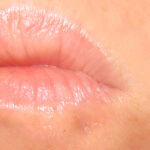Nails, present on both fingers and toes, often don’t get as much attention as other parts of our body. However, they serve as a reflection of your overall health. Healthy nails should be smooth and whitish-pink. Any deviation from this norm, such as a yellowish hue or chipped appearance, could signal underlying health issues.
If you’ve noticed a shift in the color of your nails and find yourself pondering, “Why are my nails turning yellow?” Nails often act as mirrors to our inner health. When we see yellowing nails, we might feel a pang of concern. What do yellow nails indicate, and how can we restore them to their healthy state? In this article delves into the causes, diagnosis, and prevention methods related to yellow nails.
Unveiling the Anatomy: What Makes A Nail Healthy?
Healthy nails, an indicator of good health, have specific characteristics:
- Smooth surface without pits or grooves.
- Consistent color, predominantly a pinkish hue.
- A cuticle acting as a protective barrier.
Changes in these characteristics, like discoloration, could indicate underlying health issues. Recognizing these early signs can lead to timely interventions.
Root Causes Behind Yellowing Nails
If your nails are turning yellow, it’s crucial to understand why. Yellow nails aren’t just an aesthetic problem but often signal health concerns.
Fungal Invasions: The Underlying Causes and Impact on Nail Health
Fungal infections are not just superficial concerns. When our nails turn yellow due to these infections, it’s the result of various factors playing in the background, such as persistent accumulation of dirt, traumatic events leading to blood clots, prolonged exposure to contaminated water, and even our nail grooming habits.
- Long term presence of dirt and dust in the nails.
- Blood clot under the nail after injury or pin crack
- Long time exposure of your finger and toenails in dirty water
- unhygienic nails cutting practice
Trichophyton: The Fungal Culprit Behind Nail Infections
Trichophyton is a prevalent fungus responsible for nail infections, impacting both toenails and fingernails. As the infection penetrates deeper into the nail bed, it can trigger discomfort, tightness, thickening of the nail, and even restrict finger or toe mobility. Interestingly, toenails are generally more vulnerable to these infections than fingernails.
Nevertheless, safeguarding your nails from such infections is manageable. Adopting preventive measures such as avoiding prolonged damp environments, ensuring regular and clean nail trimming, and administering immediate first aid post nail injury can significantly reduce the risk.
Why are my nails yellow day by day
Noticing a gradual yellowing of your nails can be concerning and indicative of underlying health issues. It’s essential to understand the causes and take timely preventive measures for optimal nail health.
Yellow Nail Syndrome: Causes and Treatments
People experience the yale color of a finger or toenails and retarded growth, easily breakable nails, and lack of cuticle in this condition. All these signs of nails represent the lungs’ problems and swelling of the lower limbs; however, this yellow nail syndrome is commonly seen in people above 50.
Treatment: It’s treatment is widely available all over the world through anti biotic therapies for respiratory infections care. It’s a great therapy that helps in improving yellow nail fungus.
Prevention: To prevent it you guys have to be careful about nails, try to take care of your nails by manicure under the supervision of professionals and avoid using nail paint remover more than once per week.
Thyroid Imbalances: Impact on Nail
If someone has weight loss, odd blood pressure, and yellow nails, they might have hyperthyroidism. This is when the thyroid makes too much of a hormone. It can affect anyone and can change how nails grow. If you think you have this, see a doctor. There are different kinds of thyroid issues.
- Hypothyroidism: A sluggish thyroid can cause nails to become brittle and discolored.
- Hyperthyroidism: An overactive thyroid can cause a myriad of symptoms including nail discoloration.
Onycholysis: Detachment of the Nail
Onycholysis happens when air gets between the nail and its bed, turning the nail yellow. People who use their hands and feet a lot, like football players and carpenters, often have this issue. It can also be a side effect of some medicines. It’s common among professionals who work a lot with their hands. Main causes of onycholysis.
- Traumatic Causes: Injuries, habitual picking or improper manicures can lead to nail detachment.
- Chemical Inducers: Prolonged exposure to water, strong soaps, or detergents can lead to this condition.
Protect and Preserve: Emphasizing dry and clean nails can mitigate the effects of Onycholysis.
Medication Check: If prescription drugs might be triggering the condition, it’s vital to confer with a healthcare provider.
Also Read : How To Choose Best Nail Shape For Your Fingers
What are the causes of yellow finger nails
Yellowing of fingernails can be a sign of various external factors or underlying health conditions. Understanding the root cause is crucial for effective treatment and prevention.
Cosmetic Repercussions
Nail polish can often turn nails yellow. This is because many nail polishes contain chemicals that can alter the natural shade of your nails. Moreover, nail polish removers, especially those containing acetone, strip away the protective layer of the nail, making them prone to discoloration. Overusing nail polish might leave a stubborn stain on your nails that can be challenging to remove.
- Dyes and Chemicals: Dark nail polishes, acetone-based removers can be harmful in the long run.
- Artificial Nails: Glues and adhesives can cause fungal infections and yellowing.
Effective Treatment :While patience is key (as the yellowing can fade over time), you can also consider soaking your nails in a solution of diluted hydrogen peroxide. This can help in reducing the discoloration more promptly.
Proactive Prevention: Limit the frequency of your nail polish application. When you do apply it, opt for lighter shades which are not only gentler on your nails but also leave behind fewer stains.
Chemical Exposure
Chemicals are made up of harsh compounds or have toxic discoloration properties. People employed in sectors such as dye and textile factories, paint manufacturing, and cosmetics often encounter chemicals that can discolor their nails.
- Tobacco Stains: Regular smokers often have yellow nails.
- Chemical Exposures: Jobs involving regular use of chemicals can discolor nails.
Treatment: Individuals in chemical industries are advised to wear protective gloves. If nail discoloration is observed, it’s recommended to pause, observe for a few days, and seek medical advice, as this could indicate exposure to potent chemicals.
Prevention: The best preventive measures include wearing gloves and avoiding prolonged exposure to moist environments, which can further exacerbate the effects of chemicals on nails.
Home Remedies for Yellow Nails
There are various home remedies to restore their natural shine. From common kitchen ingredients to simple practices, addressing nail discoloration can be both effective and affordable.
Baking soda
One spoon of baking soda in water can easily remove stains and slow down fungal infections.
Tea Tree Oil for Nail Health
Tea tree oil, renowned for its antifungal and antibacterial attributes, is an effective remedy for yellowed nails and combating bacterial or fungal infestations. For enhanced results, it can be combined with carriers like olive or coconut oil.
Usage: Drench a cotton ball in the oil mixture and place it on the affected nail for approximately 30 minutes. Repeat this process multiple times daily, ensuring to clear away any debris that forms. With consistent application, you should see improvements in no time.
Vitamin E in Combating Yellow Nails
Consuming vitamin E can aid in accelerating nail growth and addressing the issue of yellow nails.
Manicures and Pedicures: A Dermatologist’s Touch
Opting for regular manicures and pedicures from dermatologists can be beneficial. Not only are they skilled in addressing nail discoloration and strains, but they also employ oxidizing agents like hydrogen peroxide to effectively combat nail discoloration.
Apple Cider Vinegar: A Natural Nail Fungus Remedy
Apple cider vinegar, available in most kitchens, stands out as a trusted solution for tackling nail fungus.
Usage: Using apple cider vinegar is simple. Mix equal parts of it with water and immerse your foot into this solution. Remember, post-soak, drying your foot thoroughly is crucial, as damp conditions can promote fungal growth. An alternative remedy involves crafting a paste by blending apple cider vinegar with rice flour, which can then be applied directly to the affected nail.
Lemon Juice: A Natural Remedy for Nail Discoloration
Lemon, being a citric fruit, carries acidic properties, making it beneficial for nails. Lemons are easily accessible and might even be sitting in your kitchen right now.
Usage: Extract juice from a fresh lemon and apply it to the affected nails. Let it sit for about 30 minutes. For those with sensitive skin, a once-a-day application is recommended. However, if your skin can tolerate it, consider applying twice daily, followed by a rinse with warm water.
Dermatological Interventions: When to Seek Professional Help
Routine consultations with dermatologists can preempt many nail conditions:
- Antifungal Medications: For persistent fungal infections.
- Topical Ointments: For mild nail discolorations.
- Oral Medications: For severe nail conditions linked to systemic health issues.
- Laser Treatments: A modern solution to stubborn nail problems.
Shielding Your Nails from Turning Yellow
- Embrace Nail Hygiene: Cleaning, trimming, and moisturizing can go a long way.
- Choose Right Footwear: Prioritize breathability.
- Protective Gloves are Essential: Whether you’re gardening or dabbling in DIY crafts, they shield from potential nail harm.
- Dietary Adjustments: Nourish from within. Incorporate foods rich in biotin, zinc, and iron.
Acting promptly when you notice nail discoloration can prevent the condition from worsening. This simple home remedy, coupled with the right medications, can help address the issue effectively.
Conclusion
In conclusion, nails deserve as much attention as any other part of the body. Remember, it’s not just about “Why are my nails yellow?” but more importantly, “What are my nails telling me about my health? Act on it. Simple home remedies, professional care, and personal hygiene can work wonders.
Medical Disclaimer: The above article is for informational purposes only and does not substitute professional medical advice. Always consult with a healthcare provider for any concerns related to your health.
Disclaimer: The content on Wellness Derive is for informational purposes only and not a substitute for professional medical advice, diagnosis, or treatment. Always consult a healthcare provider for medical concerns.



